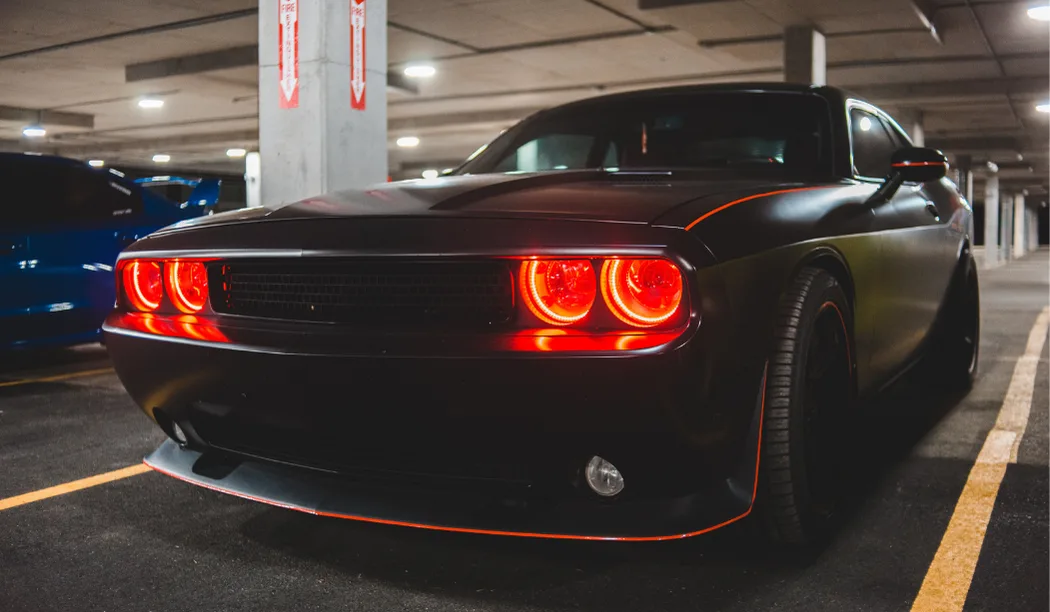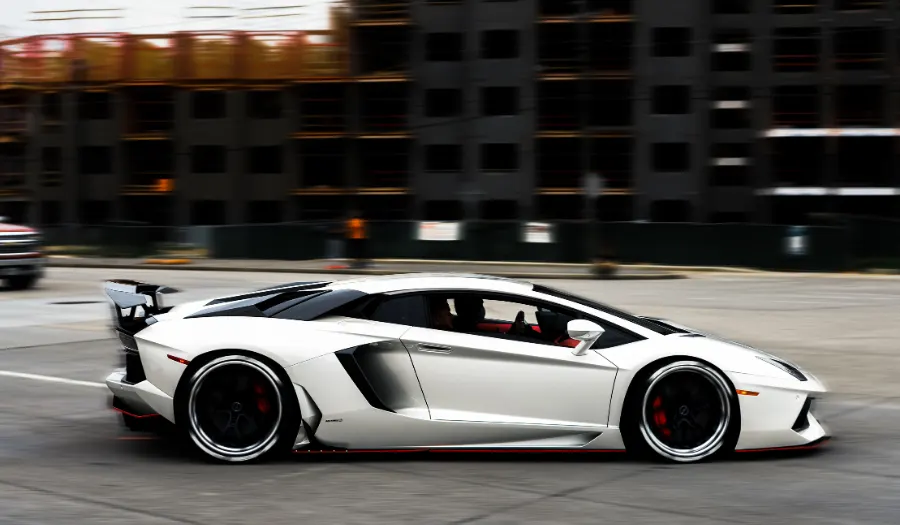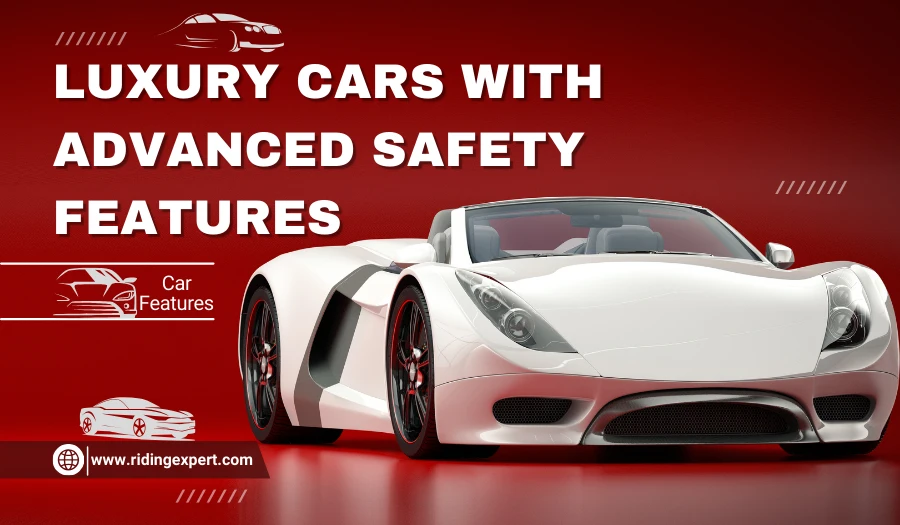Luxury cars are not just about style, speed, and comfort anymore. Today, they represent the perfect balance of elegance and safety. In 2025, carmakers are racing to design Luxury Cars With Advanced Safety Features that protect drivers, passengers, and families on every journey. From AI-powered driver assistance systems to night vision technology and 360-degree cameras, premium cars now bring innovation to the road like never before.
What Makes Luxury Cars With Advanced Safety Features Special?
Luxury vehicles have always been about exclusivity, comfort, and performance. But in 2025, they go one step further—redefining what it means to feel secure on the road. Unlike standard cars, luxury models integrate advanced safety technologies as core features, blending innovation with peace of mind.
Evolution of Safety in Luxury Vehicles
From simple seatbelts in the 1950s to airbags, ABS, and traction control in later decades, luxury cars have historically introduced safety tech before it became mainstream. Today, these vehicles are pioneering AI-driven and predictive safety systems, setting industry standards that trickle down to mass-market models.
The Role of AI Safety in Modern Cars
Artificial Intelligence has transformed how luxury cars “think.” Advanced driver-assistance systems (ADAS) now analyze road conditions, monitor driver behavior, and make split-second decisions to prevent accidents. Features like adaptive cruise control, lane-keeping assist, and automatic emergency braking are powered by AI, giving drivers both confidence and comfort.
Smart Safety Systems in Premium Cars
Luxury automakers are going beyond the basics. Premium vehicles now come with collision-avoidance sensors, 360-degree cameras, blind-spot monitoring, and driver attention detection systems. These interconnected technologies work together to anticipate risks before they happen, offering an extra layer of protection.
Night Vision in Luxury Cars: A Game-Changer
Driving at night has always been riskier—but luxury cars now offer thermal imaging and infrared night vision systems that detect pedestrians, animals, and obstacles well beyond the reach of headlights. This not only prevents accidents but also delivers unmatched confidence during low-light driving.
Why Safety Matters in Luxury Cars
Owning a luxury car is not just about prestige. It’s also about peace of mind. With top-rated luxury car safety systems, modern vehicles reduce accidents, improve control, and help drivers handle tough conditions like fog, rain, and long-distance travel.
Luxury brands have recognized that true luxury is feeling safe while enjoying comfort. Whether it’s a luxury electric car with driver assistance systems or a top crash-tested premium vehicle, safety is becoming the new luxury standard.
Read also: Features Of High-performance Engines
Top-Rated Luxury Car Safety Systems in 2025
When it comes to premium cars, safety is no longer just a feature—it’s a core value. Automakers are competing to deliver innovative systems that combine technology, intelligence, and reliability, ensuring that every drive feels both luxurious and secure. Let’s take a closer look at the most advanced safety systems dominating luxury cars in 2025.
360-Degree Camera Cars in the Luxury Segment
Parking in tight city spots or navigating narrow lanes becomes effortless with 360-degree surround-view cameras. Found in models like the BMW 7 Series, Audi A8, and Lexus LS, these systems provide a bird’s-eye view of the car, reducing blind spots and preventing collisions in crowded spaces.
Adaptive Cruise Control and Driver Assistance Systems
Modern luxury cars are now equipped with adaptive cruise control (ACC) that automatically adjusts speed according to traffic flow. Paired with lane-keeping assist, traffic jam assist, and hands-free driving capabilities, ACC ensures a smooth, stress-free, and safer ride. Vehicles like the Mercedes-Benz S-Class and Tesla Model S Plaid have set benchmarks in this category.
Advanced Airbags in Top Premium Cars
Gone are the days of basic front airbags. Luxury brands are innovating with multi-directional airbags, rear-seat airbags, and even pedestrian-protection airbags. For example, the Volvo EX90 and Genesis G90 are equipped with cutting-edge restraint systems designed to minimize injury in every possible scenario.
Crash-Tested Luxury Vehicles: The Safest Models
Crash ratings are critical for evaluating safety—and in 2025, several luxury vehicles have earned 5-star safety scores from global agencies. Standouts include the Mercedes EQS, BMW i7, and Audi Q8 e-tron, all of which excelled in frontal, side, and rollover crash tests. These results highlight how luxury automakers prioritize structural strength, energy absorption, and passenger survival space.
Best Luxury Cars With Advanced Safety Features in 2025
What Are the Top Luxury Cars With Advanced Safety Features?
In 2025, several luxury models stand out because they combine cutting-edge active safety technology, robust crash protection, and driver assistance systems. Some examples that are repeatedly praised by safety agencies and reviewers:
-
The 2025 Genesis G90 is often cited as one of the safest flagship sedans. It features front & rear automatic emergency braking, blind-spot monitoring, adaptive cruise control, lane-keeping assist, camera-based side cross-traffic alerts, and more.
-
The 2025 Infiniti QX80 full-size SUV earned a Top Safety Pick+ from IIHS. Luxury Cars With Advanced Safety Features it also offers features like automatic emergency braking with pedestrian detection, lane keeping, rear cross-traffic alert, and adaptive cruise with lane centering.
-
Volvo models (like the XC90) continue their strong reputation in safety. For example, Volvo’s “City Safety System” detecting pedestrians, cyclists, large animals, etc., is a standard or near-standard on several premium Volvo SUVs.
What makes these cars top-rated is not just one or two safety features, but a suite of both passive and active safety systems, excellent crash test ratings, and consistent performance across real-world conditions.
Top 20 Luxury Cars in the World (Safety-Focused Edition)

Here’s a curated list (not exhaustive) of 20 luxury / premium cars in 2025 that are especially safety-focused. These are vehicles that either earn top crash test / safety agency ratings or come standard with advanced driver assistance / preventative safety tech.
- Mercedes-Benz S-Class
- BMW 7 Series
- Porsche Taycan
- Audi A8
- Genesis G90
- Tesla Model S Plaid
- Lexus LS 500
- Lucid Air Touring
- Jaguar I-PACE
- Rolls-Royce Ghost
- Aston Martin Vanquish
- Ferrari 12Cilindri / 12Cilindri Spider
- Bentley Continental GT
- Bentley Flying Spur
- Rolls-Royce Spectre
- Rolls-Royce Phantom
- Mercedes-Maybach S-Class
- Ferrari Roma
- Aston Martin DB12
- Rolls-Royce Boat Tail / Bugatti La Voiture Noire (if considering one-offs/exclusive coach builds)
Read also: Health Tracking Features In Wearables
Safe Luxury Cars for Long-Distance Travel
For long drives, comfort is important—but so is fatigue-mitigation, adaptive systems, reliability, and driver assistance that reduces workload. Some models that are especially suited:
- Genesis G90 – spacious, comfortable, excellent safety tech that helps in highway driving (adaptive cruise, lane keep, blind-spot, etc.)
- Infiniti QX80 – full-size SUV, good visibility, strong assistance systems.
- Mercedes-Benz GLE – often favored for its balance of comfort / assist aids.
- Audi Q8 e-tron – quiet cabin (EV), predictive systems, night vision, cruise control aids.
Features to look for if you want a luxury car optimized for long distances:
- Comfortable and adjustable seating (especially lumbar, seat cooling/heating)
- Excellent driver assistance (adaptive cruise with lane centering, fatigue alerts, night vision)
- Advanced lighting systems for night-driving safety
- High quality suspension and noise insulation
- Reliable safety redundancy (multiple sensors, backup systems)
Which Luxury Car Brands Focus on Safety Features?
Some brands are particularly known for leading in safety. From 2025 data, these stand out:
| Brand | Key Strengths / Signature Safety Systems |
|---|---|
| Volvo | Always a safety pioneer: pedestrian / cyclist detection, strong sensor suites, City Safety, etc. |
| Genesis | Great crash test performance, generous standard ADAS tech in their higher-end models. |
| Infiniti | New redesigns include improved driver assistance + visibility tech (front wide view, invisible hood view, etc.). |
| Mercedes-Benz | PRE-SAFE, Attention Assist, driver assist features across many models; strong in both sedan & SUV segments. |
| Lexus | Reliability + safety, good active systems (Lexus Safety System+), strong overall package. |
| Bentley | Though ultra-premium, also equipping with top visibility, surround cameras, night vision and more for safety. |
| Audi | Pre Sense, predictive adaptive cruise, night vision, plus strong safety infrastructure. |
What Luxury Vehicles Are Safest for Families?
For family use, safety needs go beyond crash ratings. Key criteria include: child safety features (ISOFIX, easy access to rear seats), visibility, passenger protection, emergency braking, reliability, and driver aids for crowded roads or highways. Some family-friendly luxury cars in 2025:
- Infiniti QX80 – three rows, lots of space, many driver assist features, strong safety ratings.
- Genesis G90 – very spacious, great safety tech, luxury features that matter in family use (comfort + safety).
- Volvo XC90 – excellent for families (safety reputation, space, standard safety systems)
- Lexus RX / NX – good balance between size, luxury, and safety, easier maneuverability in urban/family settings.
- Mercedes GLE - an SUV option, combining luxury, safety, and practicality.
Luxury Electric Cars With Driver Assistance Systems

Rise of Electric Vehicles in the Premium Segment
Electric mobility has transitioned from novelty to necessity in the luxury sector. Premium automakers are now making EVs not just about sustainability, but about offering a full suite of safety and assistance features that rival (or exceed) their combustion-engine counterparts. The reasons:
- High tech platforms: EV designs allow more flexibility in sensor placement (since there's no large engine bay), better integration of radars, cameras, LiDAR, and more stable power supply for computational units.
- Regulation and user expectation: Stricter crash safety and pedestrian protection norms + consumers demanding top safety in every pricetag.
- Over-the-air (OTA) updates: EVs more commonly include OTA capabilities, meaning driver assistance systems, firmware, and even safety algorithms can be improved post-sale.
This is making safety & driver assistance systems a defining feature in luxury EV-ownership, rather than an optional add-on.
AI Safety Features in Luxury EVs
In 2025, many luxury electric cars don’t just have sensors — they’re powered by AI to be proactive rather than reactive. Key trends include:
-
Driver Awareness / Monitoring Systems: Eye-tracking, seat sensors, fatigue detection to ensure the driver is attentive, especially when using semi autonomous or hands-free modes.
-
Sensor Fusion & Advanced Perception: Merging inputs from LiDAR, multiple radars, cameras, and ultrasonic sensors so the vehicle better understands its surroundings in real time. This helps in recognizing pedestrians, animals, cyclists, and other hazards in complex road situations.
-
Predictive Systems: Vehicles begin to predict potential collisions (for example, with oncoming vehicles, or merging traffic) and apply mitigation (adjust speed, steer slightly, warn driver) even before standard collision zones.
-
High-level Autonomous / Semi-Autonomous Features: Level 2 / 2+ ADAS being standard in many, with some EVs previewing Level 3 capabilities in specific markets. This includes hands-free highway driving, intelligent lane keeping, automatic emergency braking, adaptive cruise control with speed regulation based on traffic and road conditions.
-
Computational Power & Software-defined Safety: More EVs now have powerful onboard computing (for example, dedicated AI chips) to process the safety systems, manage sensor input, and more importantly, allow safety enhancements via software updates. One example: Volvo’s upcoming ES90 will include Nvidia Drive AGX Orin chips, giving it extremely high compute capacity for safety, sensor management, and driver understanding systems.
Read also: 10 Must-know Riding Safety Tips
Examples of Top Luxury Electric Cars With Advanced Safety
Here are several EV models in 2025 that stand out for their combination of luxury and strong driver assistance / safety features:
| Model | Safety / Driver Assistance Highlights |
|---|---|
| Volvo EX90 | High safety ratings from Euro NCAP; strong onboard safety tech coupled with a lot of standard driver assistance features. |
| Volvo ES90 | Built on Volvo’s SPA2 architecture with a “Safe Space Technology” package including LiDAR, multiple radars & cameras, advanced driver monitoring inside the cabin, and very high computing power for AI safety systems. |
| Audi Q8 e-tron | Offers Predictive Adaptive Cruise Control, Intersection Assist, Night Vision in some trims — strong balance of luxury EV experience + safety tech. |
| Lucid Air Dream Edition | A luxury EV with strong crash structure, comprehensive safety features like 360-degree cameras, forward collision warning, AEB (automatic emergency braking), lane-keeping assist. |
| BMW i7 | In markets like India, comes with advanced ADAS features: forward collision warning, adaptive cruise, blind-spot assist, lane keep, driver attention warning, etc. It’s one of their showcase luxury EV sedans. |
| Kia EV9 | Large luxury electric SUV with a rich ADAS suite: features like highway driving assist, rear cross traffic collision avoidance, driver attention systems. |
Real-World Applications of Safety in Luxury Cars
Luxury cars don’t just showcase safety features in brochures—they prove their worth in everyday driving situations. Whether it’s extreme weather, long highway journeys, or bumper-to-bumper traffic, advanced safety systems are designed to protect passengers and enhance driving confidence.
Safe Driving in Extreme Weather: Are Smartphones Better Than Cameras in Rain?
One of the biggest challenges for safety tech is poor visibility in heavy rain, fog, or snow. Traditional cameras struggle when water droplets blur lenses. Luxury automakers are solving this by:
- Using radar and LiDAR systems that see through rain, fog, and snow, where cameras fail.
- Leveraging AI-powered image processing to clean up distorted visuals in real time.
- Adding heated and hydrophobic camera lenses to prevent water accumulation.
Some experts even compare modern car radars to “smartphones with weatherproof sensors,” as they remain more reliable than standard optical cameras during storms. For example, the Volvo EX90 uses LiDAR and radar fusion, ensuring safer navigation in extreme weather.
Long-Distance Travel Comfort and Safety Features
Luxury cars are designed for comfort on cross-country drives—but comfort and safety go hand in hand:
- Adaptive cruise control with lane centering reduces fatigue during long hours on highways.
- Driver attention monitoring systems track eye movement and alert drivers when drowsiness is detected.
- Massage seats, adaptive suspension, and noise-cancellation cabins not only enhance comfort but also reduce fatigue, indirectly improving safety.
- Cars like the Mercedes-Benz S-Class and BMW i7 excel at blending comfort features with safety tech, making long-distance journeys secure and relaxing.
Urban Driving Safety: Avoiding Collisions in Traffic
City traffic is unpredictable—with cyclists, pedestrians, and sudden lane changes. Luxury vehicles tackle this with:
- 360-degree cameras and blind-spot monitoring, minimizing accidents during lane shifts or tight turns.
- Automatic emergency braking with pedestrian and cyclist detection, reducing the risk of urban collisions.
- Traffic jam assist systems, which combine adaptive cruise and lane keeping to manage slow-moving traffic safely.
- Augmented reality navigation displays, helping drivers make quick, safe decisions in busy intersections.
Models like the Audi Q8 e-tron and Lexus RX 500h come equipped with these smart urban safety features, making them reliable choices for metropolitan driving.
Read also: The Best Safety Features for Your Car: A Comprehensive Guide
Final Thoughts
In 2025, luxury cars are no longer defined solely by performance, design, or brand prestige. Safety has emerged as a cornerstone of modern luxury, with advanced driver-assistance systems, AI-powered features, and cutting-edge crash protection setting the benchmark for premium vehicles. From night vision systems to 360-degree cameras, adaptive cruise control, and predictive collision avoidance, today’s luxury cars are designed to protect drivers, passengers, and pedestrians alike.
For buyers, this evolution means that investing in a luxury car isn’t just about owning a status symbol—it’s about making informed decisions that prioritize protection and peace of mind. Whether navigating urban traffic, embarking on long-distance journeys, or driving in challenging weather conditions, the latest safety innovations ensure a secure and confident experience on the road.
By understanding the safety features, technology, and real-world benefits highlighted in this guide, luxury car buyers can make choices that combine comfort, style, and above all, security—truly embodying the future of modern automotive luxury.
FAQ's: Luxury Cars With Advanced Safety Features
1. What are the safest luxury cars in 2025?
Some of the safest luxury cars in 2025 include the Genesis G90, Volvo EX90, Mercedes-Benz S-Class, Audi Q8 e-tron, and Infiniti QX80. These vehicles combine high crash-test ratings with advanced driver-assistance systems, night vision, adaptive cruise control, and predictive collision avoidance.
2. Which luxury brand has the best safety features?
Brands consistently leading in safety include:
- Volvo – Known for pedestrian/cyclist detection and “City Safety” systems.
- Genesis – High crash-test scores with extensive standard ADAS.
- Mercedes-Benz – PRE-SAFE, Attention Assist, and semi-autonomous driving features.
- Lexus – Reliable safety technology with Lexus Safety System+ 3.0.
- Audi – Advanced predictive systems, night vision, and strong structural integrity.
3. Do electric luxury cars have better safety systems?
Luxury EVs often have enhanced safety systems due to their advanced platforms. Features like radar and LiDAR integration, AI-powered perception, and over-the-air software updates make EVs like the Volvo ES90, BMW i7, Audi Q8 e-tron, and Lucid Air exceptionally safe. Additionally, battery placement often lowers the center of gravity, improving stability and rollover protection.
4. What are the top premium cars with airbags?
Top premium cars offer multi-directional airbags, including front, side, rear, and pedestrian-protection airbags. Notable models include:
- Volvo EX90 & ES90 – comprehensive airbag coverage.
- Genesis G90 – front, side, curtain, and rear-seat airbags.
- Mercedes-Benz S-Class – multi-chamber airbags for every seating position.
- BMW 7 Series – full-suite airbags with side and head protection.
5. How do AI safety systems work in modern cars?
AI safety systems use sensor fusion, machine learning, and predictive algorithms to anticipate potential accidents before they occur. They analyze data from cameras, radars, LiDAR, and ultrasonic sensors to detect pedestrians, vehicles, obstacles, and road conditions. Advanced systems can automatically adjust speed, maintain lanes, issue warnings, and even brake or steer to prevent collisions, making driving both safer and less stressful.

